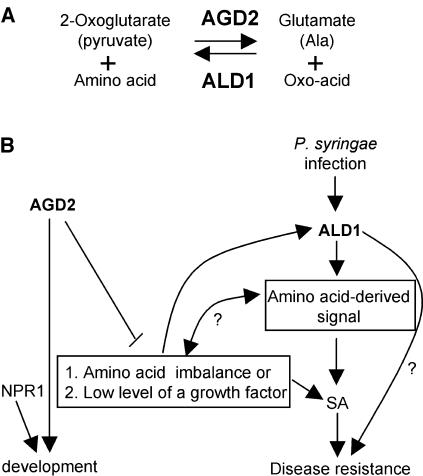Figure 7.
Models for the Enzymatic Functions and Roles of AGD2 and ALD1 in Development and Disease Resistance.
(A) Enzymatic reactions that AGD2 and ALD1 may conduct based on the in vitro data. These reactions may be performed in different subcellular compartments.
(B) Integrated model for AGD2 and ALD1 functions in vivo. When plants are infected with P. s. maculicola DG3, ALD1 is needed for SA accumulation and activation of SA signaling responses, such as PR1 expression. ALD1 also is probably required for the generation of an SA-independent defense signal. AGD2 is required for normal development. Reduced activity of AGD2 results in developmental cell death and growth phenotypes and SA accumulation possibly because of the generation of an amino acid–derived signal or an amino acid imbalance. NPR1 also is shown as controlling development as an example of a protein that functions in defense and development (Vanacker et al., 2001).

